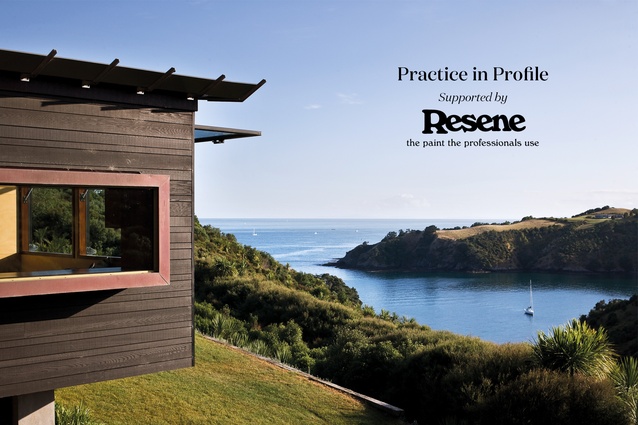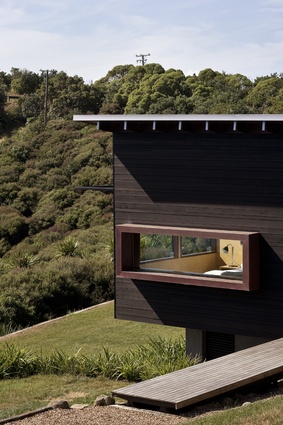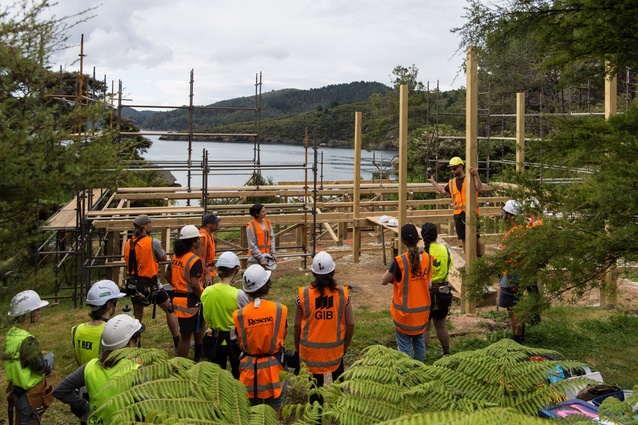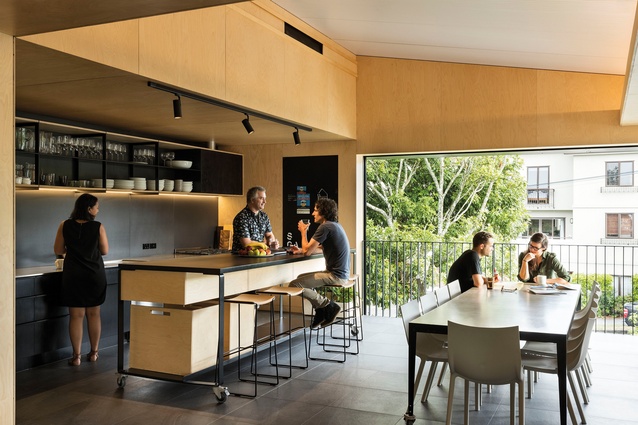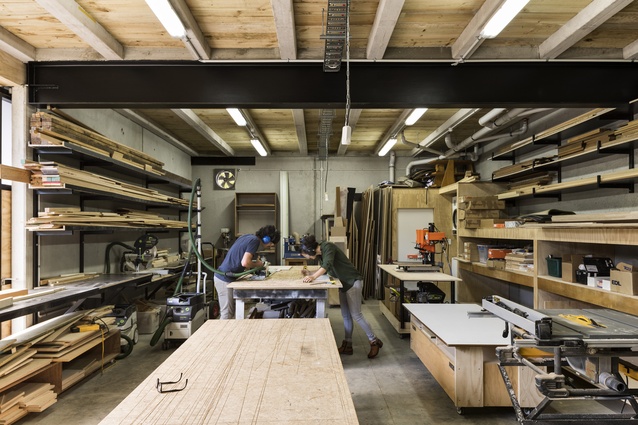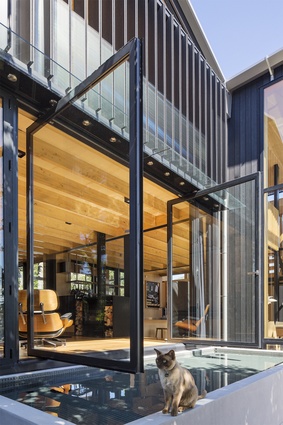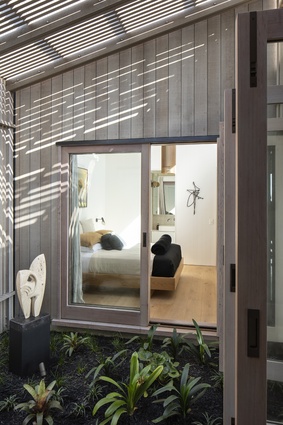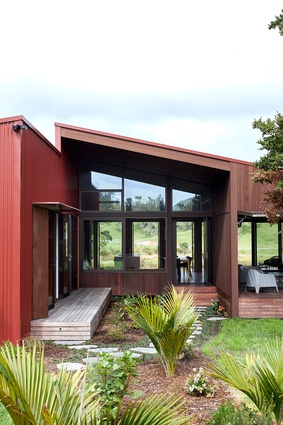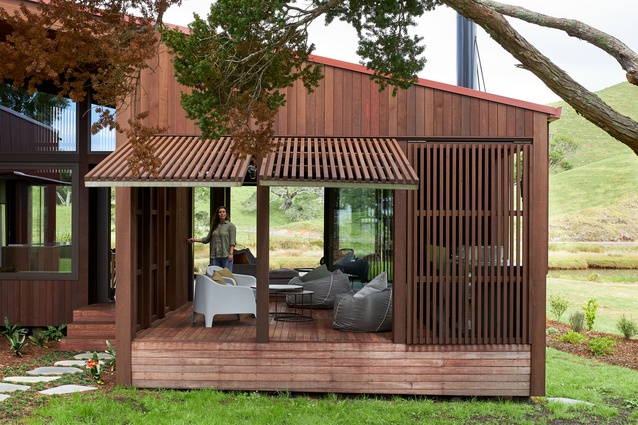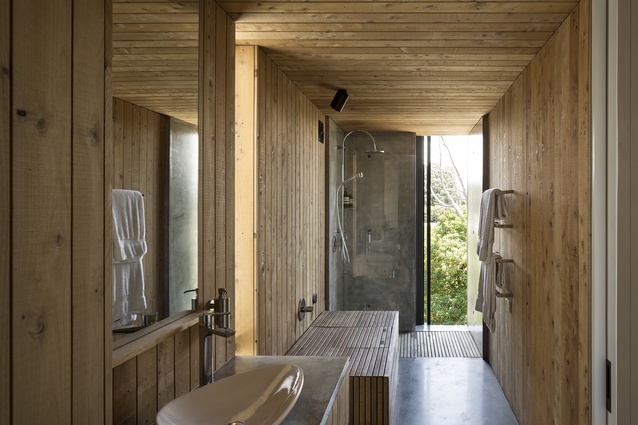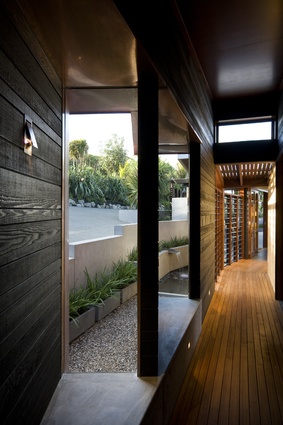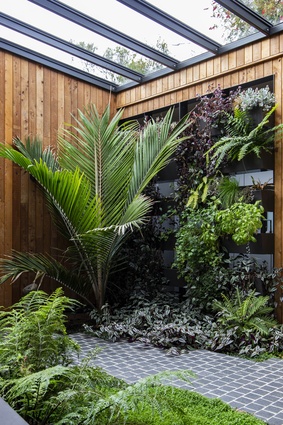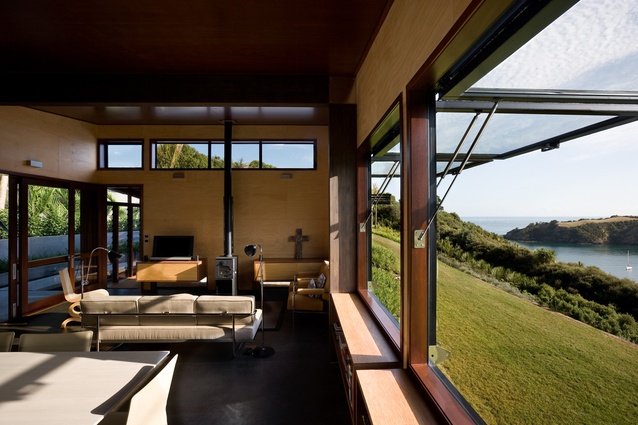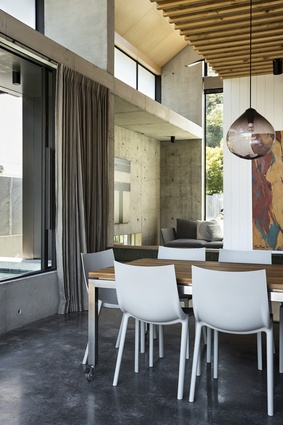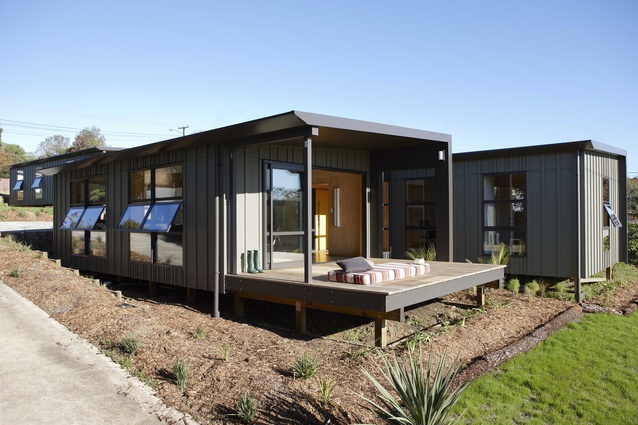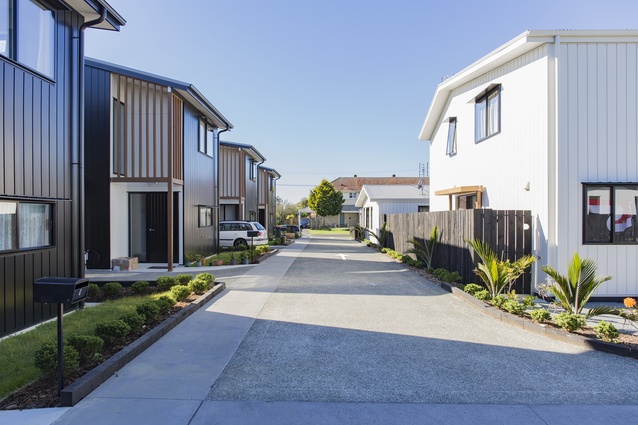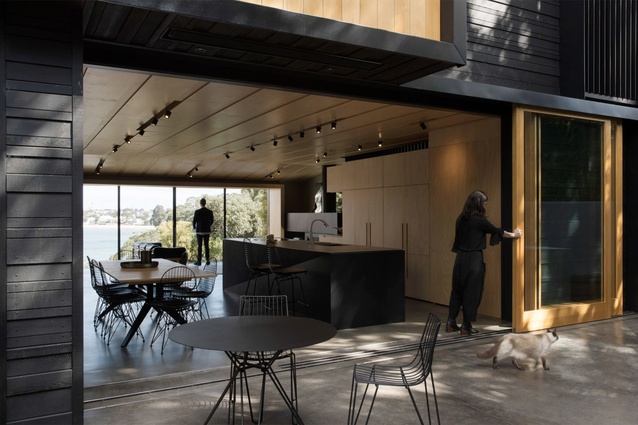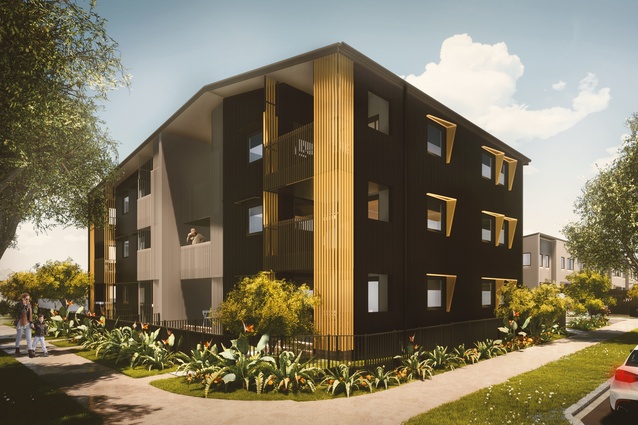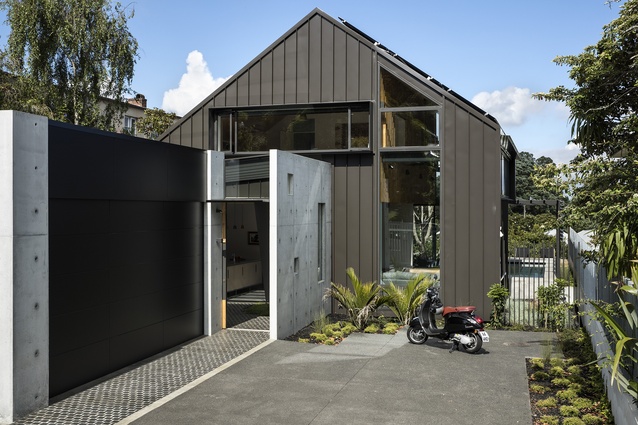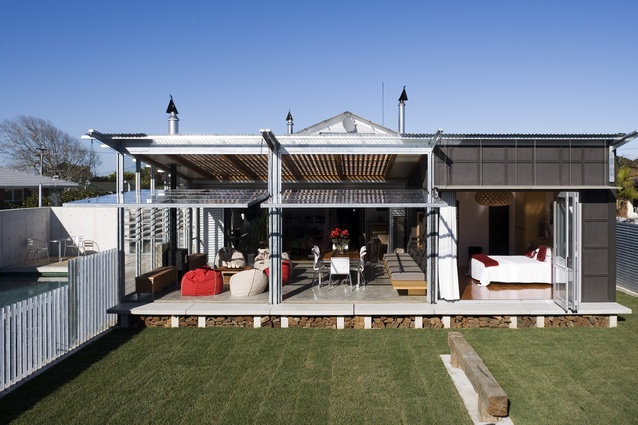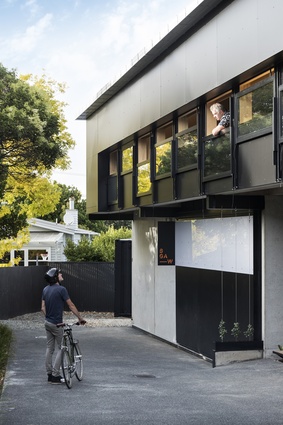Dave Strachan in profile: The land, the weather and No. 8 wire
This NZIA Gold Medal Award 2020 recipient reflects on the forces that have shaped his architectural practice.
In my youth, I worked on friends’ and uncles’ farms in the Waikato, the King Country and Taranaki, where there was endless talk about the land and the weather. Mostly, it was talk of something felt: the prevailing wind defined by the lean of the vegetation, the difference between the windward and leeward sides of sheds, and noticing the way stock take shelter against the elements. I learned about keeping the sheep dry before shearing, watched rivers and creeks rising after rain and then their drying out over summer. There were questions: Should we bale the hay today? Rain is expected so shall we fertilise? I remember sensing the temperature shifts as we rode over to the other side of a ridge, or into a bush glade or those parts of a river where the sun had warmed the rocks.

There was also this notion that the buildings, sheds, fences, races and equipment could mostly be fixed, often by the No. 8 wire approach, by the farmers themselves. They say you can take the boy out of the country but not the country out of the boy.
When I did leave Te Awamutu in 1972 for the city and the Auckland School of Architecture in 1975, the learning was of Frank Lloyd Wright’s principles of materiality, of spatial compression and release, and the built response to landforms. I was taken by the craftsman architect James Chapman-Taylor and stories of his camping on site and then often building his designs. I also liked Scottish architect Charles Rennie Mackintosh, who combined ideas of craft furniture with an overlay of fine art, and deep respect for his Scottish heritage and context as seen, for example, in his 1904 Hill House.
I remember New Zealand artist Pat Hanly saying: “You’re obviously not going to be a great artist but I can teach you to draw”. Dave Mitchell’s ‘environmental control’ lectures reinforced the importance of understanding the climate and the ways in which it might inform the design of a building. Then there were ‘Ath’s’ (later, Sir Ian Athfield) occasional but memorable visits: jeans, long hair and beard, and an ‘up the establishment’ attitude. Renzo Piano’s adage that the organisation is in the plan but the beauty lies in the section is still worth repeating. Later influences came from our Anzac brothers and sisters – Murcutt, Stutchbury, Leplastrier, Andresen and the Clares – all reinforcing an already-held core philosophy about land and weather but in a very inspirational and aspirational way.
Polluting young minds
I gained a diploma in teaching in 1979 but that wasn’t really what made me want to teach. It was through the early influence of my grandfather and then meeting Aboriginal Elder Uncle Max Dulumunmun Harrison and hearing his mantra, “If you want to hold onto something, give it away”, that I realised teaching was a critical part of practice. Plus, it was my great mate Peter Stutchbury who told me never to stop teaching – a tenet that Lloyd Rees, the famous Australian painter, had once passed on to him. Now, as a proud grandfather, I carry that responsibility to “give it away” to our five granddaughters.
“What does the line mean?” and “closing the loop” – what students apparently call “Daveisms” – are keys to my teaching practice, which began in 2001 at the University of Auckland School of Architecture and then from 2005 to 2015 at Unitec. The highlight was Studio 19, formed in 2008 to foster design, document and build projects, supported by then head of Unitec School of Architecture Tony van Raat and helped by boat-builder Tom Whelan in the workshop.
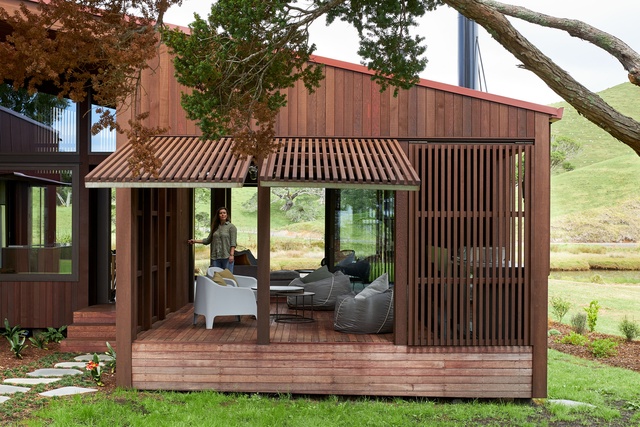
Over the years, around 150 students have been through the mill, carrying out projects where a warm, fuzzy 6B conceptual pencil line eventually becomes a 0.1mm CAD line, and then is translated onto a wobbly bit of timber (the built line). “Closing the loop” explores using this cyclic process of design, document and build, including the demands of the artificial context (council and building regulations) and the clients’ brief/budget, while trying to be innovative, functional and creative.
Practice
The elders of the Strachan clan reinforced the idea of ‘power to the family’ and of looking out for one another. It’s the ethos of our firm, formed in 1980 as the Architecture Shop and then changed to SGA in 1998, resulting in some long-serving and loyal team members, particularly Pat de Pont (28 years and counting). My little brother, when he was in the All Blacks, had drilled into him the idea that it’s not about the individual, it’s all about the team. So, that is something that we try our best to uphold in the office environment.
Our workplace doesn’t differentiate on the basis of gender, age or ethnicity (nor on all the food proclivities). There is no gender pay gap. Remuneration is based on experience, ability, leadership and the role played in the team.
In 2014, with fantastic support from my wife Col and a bequest from my parents’ estate, we borrowed a ‘shit-load’ of money and built a new workshop and office. The key aim was to bring together not only architecture but building and landscape architecture. Our office design is about making a great place for our work family – for hard work, fun, comfort, food, friendship and engaging with our colleagues and fellow designers in our ‘share practice’ series of events and talks. Mō te tangata, mō te whenua (it’s about the people, it’s about the place).
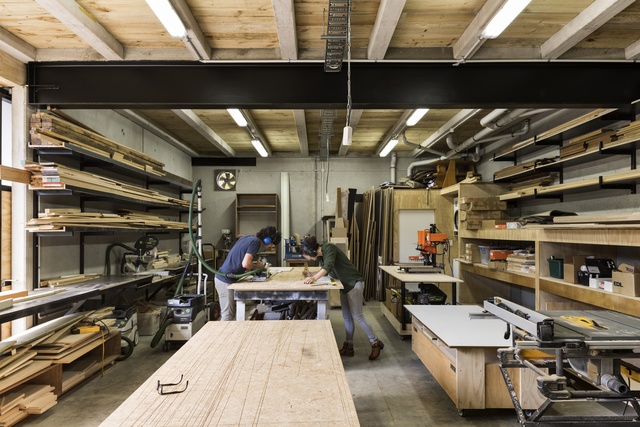
Dad’s flippant comment that we come from a long line of Scottish cattle thieves hides the fact that there are carpenters, architects and teachers in our bloodline and that continues to play out in practice. My high school woodwork teacher was a fantastic furniture-maker and craftsman and encouraged a future carpentry career.
Because of this bloodline, I always dreamed of having a real workshop (instead of various double garages with no cars allowed). SGA, over nine or more years, jointly with our sons from Crate Innovation and our mate Cocksy, who sadly passed away two years ago, has explored many types of prefab methodologies, from full volumetric, component, panel and cassette and hybrid (3D elements combined with panels and cassettes). Dave Mitchell and Julie Stout reckoned we were changing the world… only one house at a time.
Lindsay Johnston, the instigator of the architecture foundation Oz.e.tecture in Australia and also responsible for setting up the Glenn Murcutt International Master Class, Deerubbin, the student masterclass and our own Awaroa Masterclass at the Athfield property in the Abel Tasman National Park, has a couple of wonderful foreign sayings. Both the French ‘traces de la main’ and the German ‘fingerspitzengefühl’ relate to the notions of the sensitivity of hand and fingers, and also of a situational awareness. (Does that mean Health and Safety?)
Our workshop is about making models, 1:1 scaled components, testing ideas, and feeling the weight, texture and even the smell of materials. Gaining a feel for tools, learning about tolerances, the rough and the smooth, and how to connect building elements, and exploring. various fixing methods all play out in the workshop.
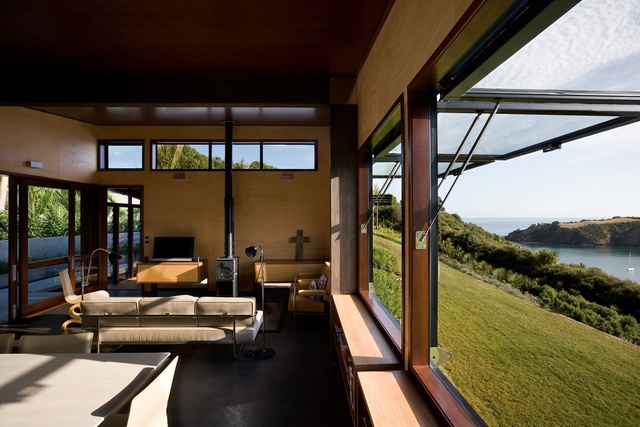
Blowing the bloody doors off
The actor Michael Caine calls his memoir Blowing the bloody doors off. At SGA, we have been working for some time on how to open up and close down buildings – weaving each building into its landscape while, at the same time, using the building form and fabric to modify the climatic conditions. We do this with what we call our ‘climate modifier rooms’, which might employ counterweighted, double-hung elements, windows and doors on gas struts or pivots, large doors or screens driven by hydraulic rams and actuators, over-wall sliders, sliding screens, and high and low-level actuator windows for cross-ventilation and heat release/stack effect.
We have found that techniques such as extruding the kitchen outside and creating bathrooms that engage directly with the landscape not only help weave these buildings into the wider landscape but also offer prospect which goes beyond mere function.
With the advent of air conditioning, inhospitable places such as deserts have been settled, and fully glazed commercial towers have offered views and rental dollars in all directions, irrespective of orientation. SGA’s approach is to treat each façade differently: generally, with a more-closed southern façade, relatively open to the east, a northern façade with soffits, overhangs, shrouds or eyebrows to adapt to summer and winter sun angles, and a screened western orientation.
We create natural air conditioners and breezeways by drawing breezes across the surface of water or through vegetation to pre-condition and cool air in the hotter months.
Insulated thermal mass, usually via a concrete slab, works to store both coolth and heat, charged by the sun in winter and shaded in summer. It can be effective even in an elevated form, as in ‘339’ (our house), where solar access was limited by a high neighbouring property. While concrete is high in embodied energy, it does have the advantage of durability and longevity. We have also completed a few projects using mass timber, such as CLT and PLT, which sequesters carbon.
We have found that running buildings parallel to contours not only deals with the artificial context/building envelope rules imposed by council regulations but also helps reduce the costs of both construction and excavation or modification of natural landforms. While some programmes do demand larger excavations, Murcutt’s principle of touching the earth lightly makes sense to us.
Collaboration
Just as ‘Ath’ was a great champion of collaboration, we, too, have always advocated a collaborative approach to projects, with our clients, consultants, builders and architects all working as a team, not head-butting. Early contractor involvement is commonplace for us now; this enables everyone to invest in the project early. This ‘triangle’ of architect, builder and client all working together invariably produces successful projects that we can all be proud of.
Socially responsible architecture
Like many design-led practices, we are lucky to have a few ‘high-architecture’ projects on the go at any one time, with higher budgets and fees, on larger scales and, often, on pristine sites. For me, in the words of Billy Gibbons’ ZZ Top song I Gotsta Get Paid, this means some of these projects enable us to take on important work, albeit at a very low fee, for community organisations and charitable trusts. Over the years, we have worked with KidsCan, Motu Kaikoura Trust, Ngāti Whātua Ōrākei, VisionWest, two Baptist churches and CIDANZ (Cook Islands Development Agency New Zealand) to help deliver projects with very modest budgets, each of which impact on the lives of many.
Much of our current work is in social, multi-unit, and low-cost KiwiBuild housing, often with joint ventures between various government agencies, third-sector housing providers and developers. These developments now number more than 250 completed or in-process homes. Our mantra here is: “If you wouldn’t live in it yourself, it’s just not good enough”. If these projects are well done, given the numerous constraints, they can have an impact on a far greater number of families than can one-off bespoke houses, in terms of both health and well-being; plus, we believe that architecture should be able to uplift the human spirit.
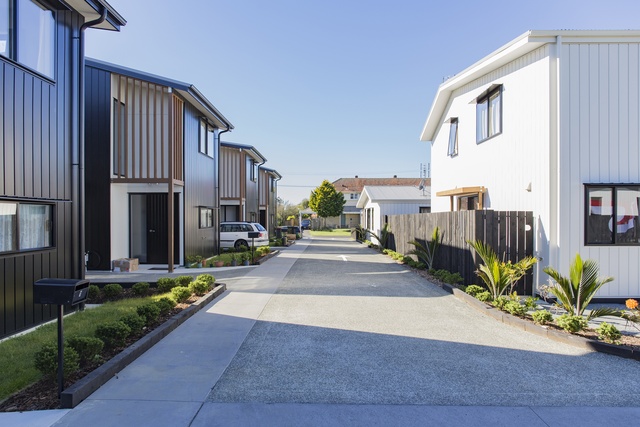
Sustainability and putting your money where your mouth is
Most of our embedded 12 core principles (such as minimising CO2 emissions, energy demand and resource use, responding to climate, selecting materials based on life-cycle analysis, reducing, recycling, collecting, creating healthy environments) play out across our work but particularly so in two of our more recent projects.
‘339’ sits on a major bus route and has a grid-connected 6.5KW solar array, 15,000 litres of water storage (for toilet-flushing, garden-watering and laundry use), a climate-modifying entry ‘lung’ of plants and vegetables/herbs, no lawn (only ground cover and climbing plants), water-cooling, stack ventilation fans and actuator windows, thermal mass and passive house insulation methods.
SGA’s studio and workshop spaces utilise many prefabrication methodologies, are naturally ventilated, have high thermal mass and well-above-code insulation standards, solar-actuated exhaust fans via a mesh grilled plenum, custom counter-weighted rack and pinion windows in prefabricated monocoque units and over-wall sliders. Both projects have already achieved the goals set by the recent RIBA ‘Sustainable Outcomes Guide for 2035’ CO2 targets for energy use and water use (as measured not estimated) but, as we all know, there is still a long way to go. As singer/songwriter James McMurtry tells us… “every little bit counts”.
Col and I recently saw the amazing Hotere exhibition in the Edinburgh of the south – Ātete (to resist). That sentiment is something we try to keep in mind: resist choking legislation from the white coats in Wellington, resist gender and race inequality, resist the fact that some kids go to school with no shoes on their feet and no breakfast, resist George Orwell’s 1984 novel where big brother is watching you, and resist the endless departments that have been created (more acronyms than you can poke a fat stick at). It would be very satisfying if SGA could keep running against the wind.

